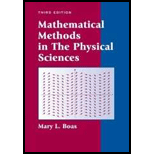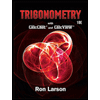
Concept explainers
Find each of the following in rectangular form x+iy and check your results by computer. Remember to save time by doing as much as you can in your head.
Want to see the full answer?
Check out a sample textbook solution
Chapter 2 Solutions
Mathematical Methods in the Physical Sciences
Additional Math Textbook Solutions
Finite Mathematics & Its Applications (12th Edition)
Mathematics with Applications In the Management, Natural, and Social Sciences (12th Edition)
Mathematics for Elementary Teachers with Activities (5th Edition)
Using and Understanding Mathematics: A Quantitative Reasoning Approach (6th Edition)
Fundamentals of Differential Equations and Boundary Value Problems
A Problem Solving Approach to Mathematics for Elementary School Teachers (12th Edition)
 Mathematics For Machine TechnologyAdvanced MathISBN:9781337798310Author:Peterson, John.Publisher:Cengage Learning,Algebra & Trigonometry with Analytic GeometryAlgebraISBN:9781133382119Author:SwokowskiPublisher:Cengage
Mathematics For Machine TechnologyAdvanced MathISBN:9781337798310Author:Peterson, John.Publisher:Cengage Learning,Algebra & Trigonometry with Analytic GeometryAlgebraISBN:9781133382119Author:SwokowskiPublisher:Cengage Trigonometry (MindTap Course List)TrigonometryISBN:9781337278461Author:Ron LarsonPublisher:Cengage Learning
Trigonometry (MindTap Course List)TrigonometryISBN:9781337278461Author:Ron LarsonPublisher:Cengage Learning Trigonometry (MindTap Course List)TrigonometryISBN:9781305652224Author:Charles P. McKeague, Mark D. TurnerPublisher:Cengage Learning
Trigonometry (MindTap Course List)TrigonometryISBN:9781305652224Author:Charles P. McKeague, Mark D. TurnerPublisher:Cengage Learning



